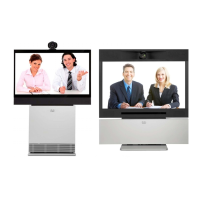
Do you have a question about the Cisco TelePresence System Codec C40 and is the answer not in the manual?
| Maximum Frame Rate | 60 fps |
|---|---|
| Power Supply | 100-240V AC, 50/60 Hz |
| Firewall Traversal | Yes |
| HDMI Outputs | 2 |
| Video Standards | H.261, H.263, H.263+, H.264 |
| Audio Standards | G.711, G.722, G.722.1, G.729, AAC-LD |
| Maximum Video Resolution | 1080p (1920x1080) |
| Network Protocols | IPv4, IPv6, TCP, UDP, HTTP, HTTPS, SNMP, SIP, H.323 |
| Video Inputs | HDMI, Composite |
| Video Outputs | 2 x HDMI |
| Audio Inputs | XLR, HDMI |
| Audio Outputs | HDMI |
| Network Interface | 10/100/1000 Ethernet |
| Embedded Encryption | AES |
| Content Sharing | Yes (H.239, BFCP) |
Explains how to wake the system from standby mode using the remote control or by pressing any key.
Details the functions of each button on the remote control for system operation.
Describes how to use the remote control to navigate through system menus and select options.
Explains methods for entering text, including using the virtual keyboard.
Details how to change the screen layout and display options, including selfview.
Explains how to find and use predefined camera positions and zoom settings.
Details the first part of the process for creating a new camera preset.
Continues the process of creating a new camera preset.
Details the first part of the process for editing an existing camera preset.
Continues the process of editing an existing camera preset.
Explains how to adjust camera exposure and whitebalance settings.
Describes how to select the primary input source for the system.
Provides an overview of call settings, including auto-answer and bit rate.
Details how to configure automatic answering and microphone muting.
Explains how to set the default call rate in kilobits per second.
Describes how to select the user interface language for the system.
Explains options for setting system date and time, including NTP modes.
Details manual configuration of system date, time, and time zone.
Explains how to automatically set the system's date and time via NTP server.
Guides on how to choose and preview different ring tones for the system.
Explains how to adjust the volume level for system ring tones.
Details how to enable or disable audible feedback for key presses.
Describes how to set a static wallpaper for the system's idle screen.
Provides instructions for uploading and using custom wallpaper images.
Explains how to view system hardware, software, and network details.
Details how to access system settings typically reserved for administrators.
Guides on how to restart the system for settings changes to take effect.
Details how to initiate a call by manually entering contact information.
Explains how to find and call contacts from the system's phone book.
Guides on how to initiate calls using the history of recent incoming/outgoing calls.
Describes how to answer, reject, or manage incoming calls.
Explains how to end a current video call.
Shows how scheduled meetings appear when integrated with management systems.
Explains how to expand a call to include multiple participants.
Details how to create a list of contacts to call sequentially.
Describes how the host or participants can end a video conference.
Details how to use the Multiway feature to add participants to a call.
Explains Multiway when expanding an existing call to include new participants.
Explains Multiway when an incoming call requires a decision during an active call.
Guides on identifying the system's codec type to understand feature support.
Introduces the phone book, its organization, and corporate vs. personal contacts.
Explains how to browse through phone book entries and folders.
Details the process of placing a call to a selected contact.
Describes how to access the phone book from the main menu or call menu.
Guides on using the virtual keyboard to search for contacts efficiently.
Explains how to add new contacts to 'My contacts'.
Details copying contacts from recent calls or the phone book to 'My contacts'.
Guides on manually entering new contact details into 'My contacts'.
Explains how to edit or remove contacts from 'My contacts'.
Details how to share PC content and dual video streams during a call.
Explains the functionality and benefits of viewing two video streams simultaneously.
Guides on choosing the presentation source for shared content.
Explains how to control near-end and far-end cameras during a call.
Details how to adjust pan, tilt, and zoom for your own camera.
Explains how to control the camera of the far-end participant.
Guides on how to join scheduled meetings via the meeting reminder.
Explains how to view details like organizer, description, and recording status.
Details how to view a list of scheduled meetings navigable with the remote.
Explains how to access detailed information for a selected meeting.
Describes options for joining new meetings while already in an active call.
Explains how to handle situations with multiple concurrent meetings.
Guides on how to extend the duration of an ongoing scheduled meeting.
Introduces administrator settings for system configuration and password protection.
Details the steps to access the administrator settings menu.
Explains how to assign custom functions to the system's softbuttons.
Guides on assigning the 'Main source selection' function to a softbutton.
Details assigning the 'Camera preset' function to a softbutton.
Explains assigning the 'Speed dials' function to softbuttons for quick contact access.
Illustrates the visual appearance of the system with customized softbuttons.
Guides on how to remove or clear assigned softbutton functions.


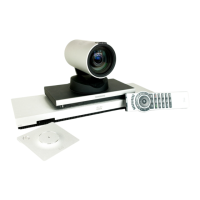


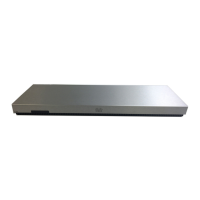
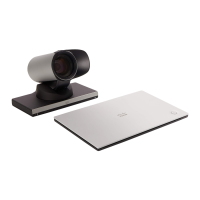
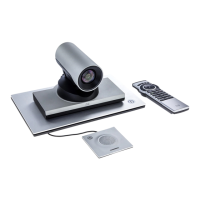

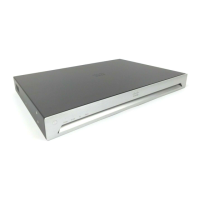
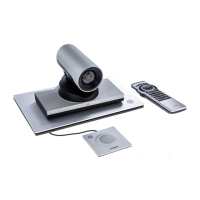

